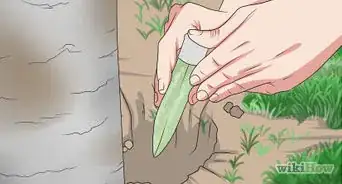This article was co-authored by Lauren Kurtz. Lauren Kurtz is a Naturalist and Horticultural Specialist. Lauren has worked for Aurora, Colorado managing the Water-Wise Garden at Aurora Municipal Center for the Water Conservation Department. She earned a BA in Environmental and Sustainability Studies from Western Michigan University in 2014.
There are 9 references cited in this article, which can be found at the bottom of the page.
wikiHow marks an article as reader-approved once it receives enough positive feedback. In this case, 89% of readers who voted found the article helpful, earning it our reader-approved status.
This article has been viewed 284,018 times.
Urea fertilizer is a stable, organic fertilizer that can improve the quality of your soil, provide nitrogen to your plants, and increase the yield of your crops.[1] You can usually get it in dry, granular form. There are several benefits to using urea as a fertilizer, but urea is not without its disadvantages. Knowing how to properly apply urea fertilizer to your soil and how urea interacts with other fertilizers can help you avoid these disadvantages and get as much benefit out of your fertilizer as possible.
Steps
Applying Urea on Its Own
-
1Minimize ammonia loss by applying urea on a cool day. Urea is best applied on a cool day, in weather between 32° to 60° F (0°-15.6° C), and with little to no wind. At colder temperatures, the ground is frozen, making it difficult to incorporate the urea into the soil. At higher temperatures, and in windy conditions, the urea is broken down faster than it can soak into the soil.[2]
-
2Use a urea fertilizer with a urease inhibitor before planting. Urease is the enzyme that begins the chemical reaction that turns urea into the nitrates plants need. Applying urea fertilizers before planting leads to high amounts of the urea being lost before it can benefit your plants. Using a fertilizer with a urease inhibitor can slow the chemical reaction, and helps retain urea in the soil.[3]Advertisement
-
3Spread the urea evenly across the soil. Urea is packaged and sold as small, solid pellets or granules. Broadcast the urea with a fertilizer spreader or sprinkle the pellets by hand evenly across your soil. For most plants, you will want to keep the urea close to the plant's roots, or close to where you will plant the seeds.[4]
-
4Wet the soil. Before urea is turned into the nitrates your plants need, it first becomes ammonia gas. Because gases can easily escape from the surface of the soil, applying fertilizer when the ground is wet will help to incorporate the urea into the soil before the chemical reaction begins. This way, more of the ammonia is trapped within the soil.
- The top half inch (1.3 cm) of soil should be wet to keep as much ammonia gas in the soil as possible. You can water the soil yourself, apply the urea before it rains, or apply within 48 hours after the snow on your fields has completely melted.
-
5Till the soil to incorporate the urea. Tilling your fields or garden is a great way to incorporate the urea fertilizer into the soil before any of the ammonia gas can be lost. Harrow, drag, or hoe the field in order to incorporate the urea into the top layer of the soil.
-
6Control the amount of nitrogen you give to potato plants. Certain varieties of potatoes can handle high levels of nitrogen, while others cannot. Be cautious and treat all potatoes the same way. Avoid giving potato plants large quantities of nitrogen with your urea fertilizer.
- Urea fertilizers can be applied directly onto potato plants, or in a solution with other fertilizers, as long as the solution is made up of 30% nitrogen or less.
- Solutions of urea fertilizer that are more than 30% nitrogen should only be applied to fields before potatoes are planted.[5]
-
7Fertilize grains with urea on a mild day. Urea can be applied directly onto most cereal grains, but never in temperatures above 60° F (15.6° C). When applied in warmer temperatures, the plants will give off an odor of ammonia.[6]
-
8Apply urea to corn seeds indirectly. Only apply urea to corn indirectly, by spreading the urea onto soil at least 2 inches (5 cm) away from the corn seeds. Direct exposure to urea is toxic to the seeds, and greatly reduces the corn plant's yield.[7]
Mixing Urea with Other Fertilizers
-
1Determine your ideal fertilizer ratio. Fertilizer ratios, also called N-P-K numbers, are a series of 3 numbers that tell you how much of a fertilizer mixture, by weight, is made up of fertilizers rich in nitrogen, phosphorus, and potassium. If you have a sample of your soil studied, you will be provided with an ideal fertilizer ratio that will help make up for your soil's nutrient deficiencies.[8]
- Most hobbyist gardeners can find premixed fertilizers that will suit their needs at a plant nursery or garden supply center.[9]
-
2Combine urea with additional fertilizers to create a stable fertilizer mixture. Urea provides plants with nitrogen, but other elements, like phosphorus and potassium, are important for plant health as well. Fertilizers that you can safely mix and store with urea include:
- Calcium cyanamide
- Sulphate of potash
- Sulphate of potash magnesium
-
3Mix urea with certain fertilizers to fertilize plants immediately. There are certain fertilizers that can be mixed with urea, but lose their effectiveness after 2-3 days because of the reactions that occur between the fertilizer's chemicals. These include:
- Chilean nitrate
- Sulphate of ammonia
- Nitrogen magneseia
- Diamonnium phosphate
- Basic slag
- Rock phosphate
- Muriate of potash
-
4Prevent unwanted chemical reactions from harming your crops. Some fertilizers will react with urea to either create a volatile chemical reaction or render the fertilizer mixture completely useless. Never combine urea with the following fertilizers:
- Calcium nitrate
- Calium ammonium nitrate
- Limestone ammonium nitrate
- Ammonium sulphate nitrate
- Nitropotash
- Potash ammonium nitrate
- Superphosphate
- Triple superphosphate [10]
-
5Blend urea with phosphorus and potassium-rich fertilizers for a well-balanced fertilizer. Referencing the list of fertilizers that are and are not effective to mix with urea, choose sources of phosphorus and potassium to add to your fertilizer mix. Many of these are available at nurseries and garden supply stores.
- Add each of your chosen fertilizers together, according to the weights given by your fertilizer ratio. Mix them together thoroughly. This can be done in a large bucket, in a wheelbarrow, or with mechanical mixers.[11]
-
6Spread your urea-based fertilizer evenly across your crops. Apply your fertilizer mixture as you would apply urea on its own, spreading it evenly across the soil. Then water and till the soil in order to incorporate the fertilizer.
- Urea is less dense than other fertilizers. If you are using spinning-type equipment to spread your urea-based fertilizer over large distances on your farm, keep your spread width below 50 feet (15.2 m) to spread the fertilizer mixture equally.[12]
Community Q&A
-
QuestionIs it a good idea to apply urea to my new lawn?
 Community AnswerUrea is a common nitrogen fertilizer and an ingredient in many lawn fertilizers. Slow-release forms such as sulfur-coated urea are especially popular for lawns and golf courses. Adding urea to your lawn helps increase nitrogen levels in the soil.
Community AnswerUrea is a common nitrogen fertilizer and an ingredient in many lawn fertilizers. Slow-release forms such as sulfur-coated urea are especially popular for lawns and golf courses. Adding urea to your lawn helps increase nitrogen levels in the soil. -
QuestionCan I apply urea to maize when it is at the flowering stage?
 Community AnswerNo. Complete all the recommended doses of fertilizers before the reproductive stage.
Community AnswerNo. Complete all the recommended doses of fertilizers before the reproductive stage. -
QuestionHow do I find uera fertilizer in India?
 Community AnswerIn most parts of the country, it's available in stores meant for the sale of agriculture products.
Community AnswerIn most parts of the country, it's available in stores meant for the sale of agriculture products.
Warnings
- Too much nitrate in the soil can burn plants. Applying urea fertilizer to wet soil will help prevent burning.⧼thumbs_response⧽
- Always store urea and ammonium nitrate separately.[14]⧼thumbs_response⧽
References
- ↑ https://www.extension.umn.edu/agriculture/nutrient-management/nitrogen/fertilizer-urea/
- ↑ https://www.youtube.com/watch?v=OdHCeZvkgY8
- ↑ https://ag.purdue.edu/agry/extension/Documents/Soil%20Fertility/Urea%20June%202017.pdf
- ↑ https://www.almanac.com/content/how-apply-fertilizers-your-garden
- ↑ http://www.gov.pe.ca/photos/original/af_fact_ufcp.pdf
- ↑ https://www.extension.umn.edu/agriculture/nutrient-management/nitrogen/fertilizer-urea/
- ↑ https://www.extension.umn.edu/agriculture/nutrient-management/nitrogen/fertilizer-urea/
- ↑ http://plantscience.psu.edu/research/centers/turf/extension/factsheets/fertilizer-ratio
- ↑ https://www.sunset.com/garden/garden-basics/crash-course-fertilizers
- ↑ http://www.cropsreview.com/urea-fertilizer.html
- ↑ http://www.walterreeves.com/gardening-q-and-a/fertilizer-mixing-your-own/
- ↑ https://www.extension.umn.edu/agriculture/nutrient-management/nitrogen/fertilizer-urea/
- ↑ http://plantscience.psu.edu/research/centers/turf/extension/factsheets/fertilizer-ratio
- ↑ https://www.extension.umn.edu/agriculture/nutrient-management/nitrogen/fertilizer-urea/
About This Article
To apply urea fertilizer, wait for a cool, windless day when the temperature is between 32° and 60°F (0° and 16°C). On warmer, windy days, the urea will break down too quickly. If you’re applying urea before planting, use a fertilizer that contains a urease inhibitor, which will prevent the urea from being used up too quickly before your plants grow. Spread the urea granules across your soil, focusing on the spots around your plants’ roots or where you plan on burying seeds. Then, water the soil so the top ½ inch (1.3 cm) is wet, which will help incorporate the urea into the soil and prevent the ammonia gas it releases from escaping. Finally, till the urea into the top layer of the soil so it’s fully incorporated. For more advice from our Horticulturist co-author, like how to mix urea with other fertilizers, read on.

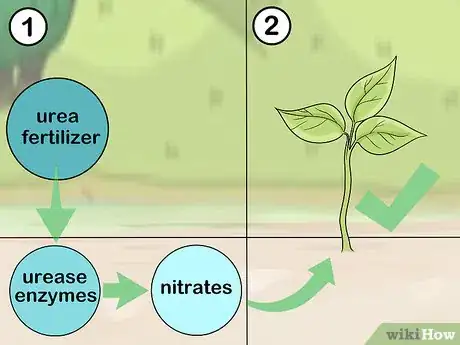


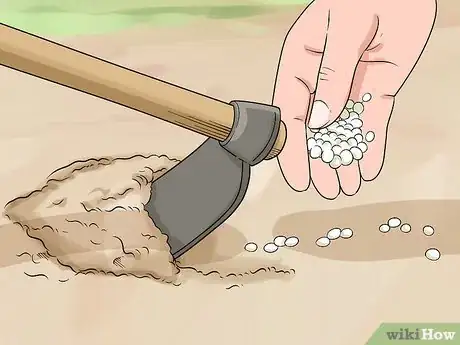
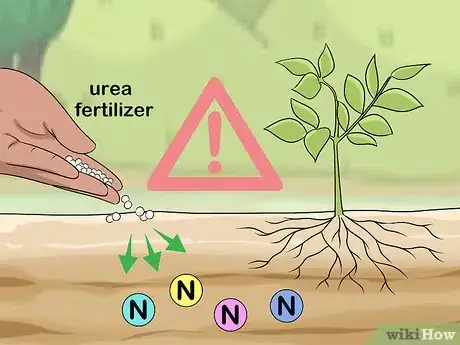
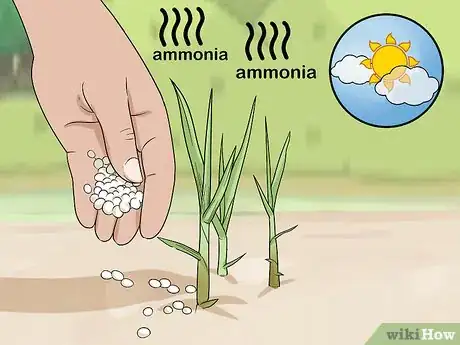
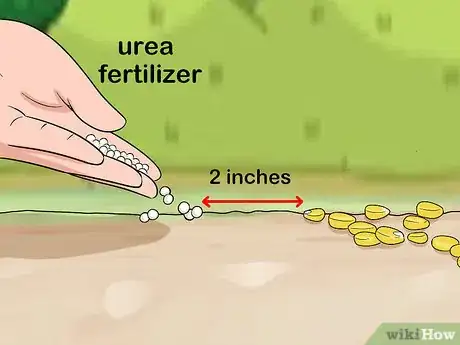

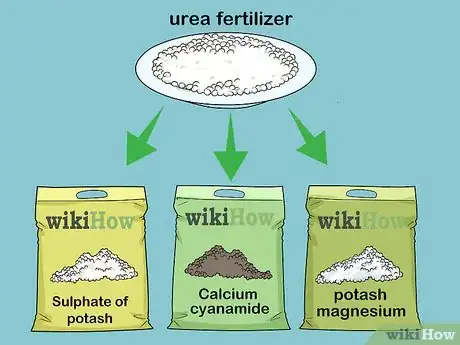
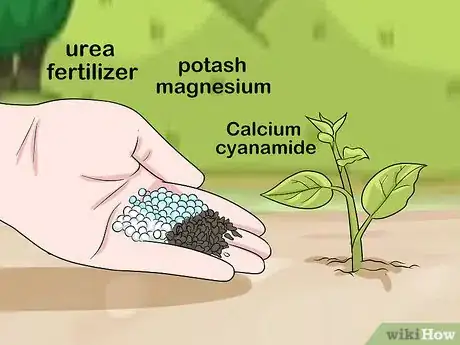
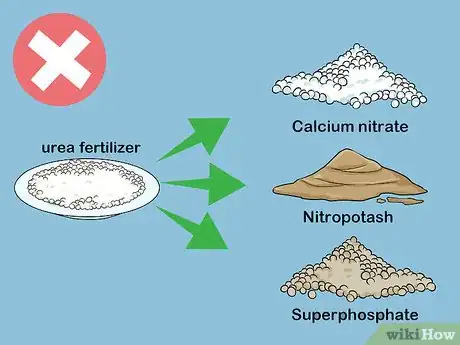
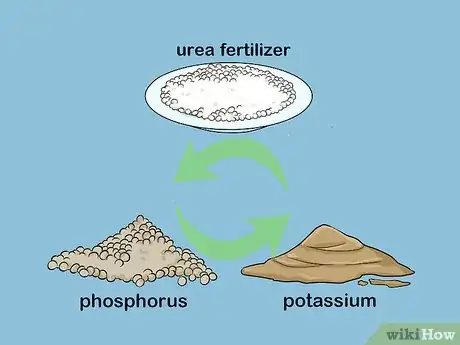
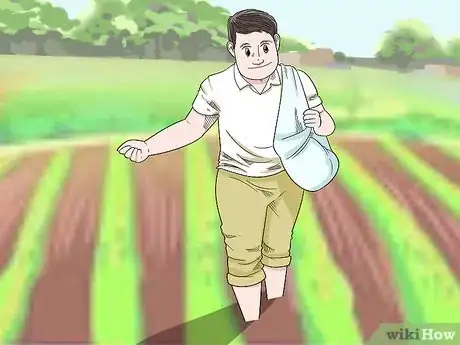

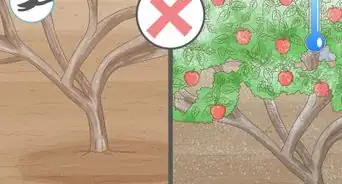
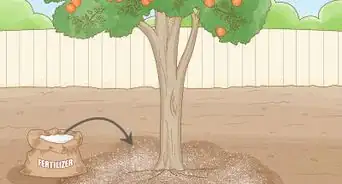


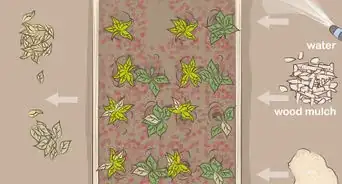
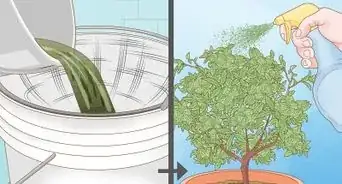

-Step-10-Version-3.webp)
